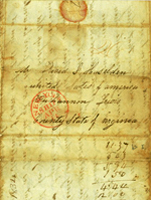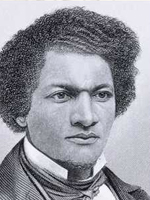"Daniel Boone (1734-1820), known for his role in the exploring and settling of the Kentucky frontier decided that the settlement of Boonesborough had become far too crowded. In December 1779, Boone and his family established Boone’s Station. At its height, the community had 15 to 20 families, including the Boone, Barrow, Hays, Morgan, Muir, Scholl and, Stinson families.
Daniel Boone and his family endured many hardships while living at Boone's Station. Both his son Israel, and nephew Thomas Boone were killed at the Battle of Blue Licks in 1781. By 1781, Boone’s claim to Boone Station proved to be invalid. He and other members of the settlement continued to live there for a brief period. However, by 1791 Boone Station had ceased to exist. In 1795, Robert Frank purchased 500 acres that included the Station site.
Eventually Boone and his family moved to Missouri where the famous pioneer died in 1820. In 1845, the Governor, and General Assembly of Kentucky requested that the remains of Daniel Boone and his wife Rebecca Bryan Boone be reburied in Kentucky. They are buried in the State Cemetery in Frankfort, Kentucky."

